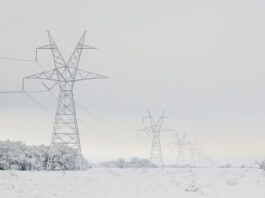The individual commitments made by parties of the United Nations Paris Agreement are not enough to fulfill the agreement’s overall goal of limiting global temperature rise to less than 2 degrees Celsius above pre-industrial levels. The difference between the U.N. goal and the actual country commitments is a mere 1 C, which may seem negligible. But a study from Stanford University, published Feb. 14 in Science Advances, finds that even that 1-degree difference could increase the likelihood of extreme weather.
In this study, Noah Diffenbaugh, the Kara J Foundation Professor of Earth System Science at Stanford’s School of Earth, Energy & Environmental Sciences, and fellow researchers from Columbia University and Dartmouth College expanded on previous work analyzing historical climate data, which demonstrated how greenhouse gas emissions have increased the probability of recording-breaking hot, wet and dry events in the present climate. Now, the group analyzed similar models to estimate the probability of extreme weather events in the future under two scenarios of the Paris Agreement: increases of 1.5 to 2 degrees if countries live up to their aspirations, or 2 to 3 degrees if they meet the commitments that they have made.
“The really big increases in record-setting event probability are reduced if the world achieves the aspirational targets rather than the actual commitments,” said Diffenbaugh, who is also the Kimmelman Family Senior Fellow in the Stanford Woods Institute for the Environment. “At the same time, even if those aspirational targets are reached, we still will be living in a climate that has substantially greater probability of unprecedented events than the one we’re in now.”
Extreme events now and in the future
The new study is the latest application of an extreme event framework that Diffenbaugh and other researchers at Stanford have been developing for years. They have applied this framework to individual events, such as the 2012-2017 California drought and the catastrophic flooding in northern India in June 2013. In their 2017 paper on severe events, they found that global warming from human emissions of greenhouse gases has increased the odds of the hottest events across more than 80 percent of the globe for which reliable observations were available, while also increasing the likelihood of both wet and dry extremes.
The framework relies on a combination of historical climate observations and climate models that are able to simulate the global circulation of the atmosphere and ocean. The group uses output from these models run under two conditions: one that includes only natural climate influences, like sunspot or volcano activity, and another that also includes human influences like rising carbon dioxide concentrations. The researchers compare the simulations to historical extreme event data to test whether the condition with natural or human influences best represents reality.
For the new study, the researchers expanded the number of climate models from their previous paper that had investigated the 1 degree of global warming that has already occurred, strengthening their earlier conclusions. Then, they used their findings to predict the probabilities of severe events in the two Paris Agreement scenarios.
Although the researchers knew that increases in temperature would very likely lead to increases in severe events, the stark difference in the outcomes of the two scenarios surprised them.
The researchers found that emissions consistent with the commitments countries have made are likely to result in a more than fivefold increase in probability of record-breaking warm nights over approximately 50 percent of Europe, and more than 25 percent of East Asia. This 2 to 3 degrees of global warming would also likely result in a greater than threefold increase in record-breaking wet days over more than 35 percent of North America, Europe and East Asia. The authors found that this level of warming is also likely to lead to increases in hot days, along with milder cold nights and shorter freezes.
Meeting the Paris Agreement’s goal of keeping the global-scale warming to less than 2 degrees is likely to reduce the area of the globe that experiences greater than threefold increases in the probability of record-setting events. However, even at this reduced level of global warming, the world is still likely to see increases in record-setting events compared to the present.
An opportunity to get ahead
When people build a dam, plan the management of a river or build on a floodplain, it is common practice to base decisions on past historical data. This study provides more evidence that these historical probabilities no longer apply in many parts of the world. The new analysis helps clarify what the climate is likely to look like in the future and could help decision makers plan accordingly.
“Damages from extreme weather and climate events have been increasing, and 2017 was the costliest year on record,” Diffenbaugh said. “These rising costs are one of many signs that we are not prepared for today’s climate, let alone for another degree of global warming.”
“But the good news is that we don’t have to wait and play catch-up,” Diffenbaugh added. “Instead, we can use this kind of research to make decisions that both build resilience now and help us be prepared for the climate that we will face in the future.”
Provided by:
Stanford University
More information:
N.S. Diffenbaugh at Stanford University in Stanford, CA el al., Unprecedented climate events: Historical changes, aspirational targets, and national commitments, Science Advances (2018). advances.sciencemag.org/content/4/2/eaao3354
Image:
Noah Diffenbaugh, professor of Earth system science at Stanford University.
Credit: L.A. Cicero







